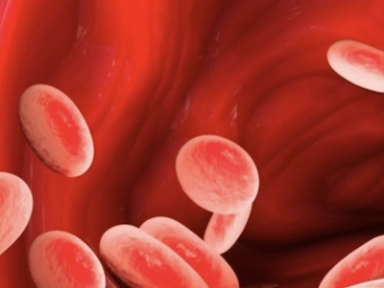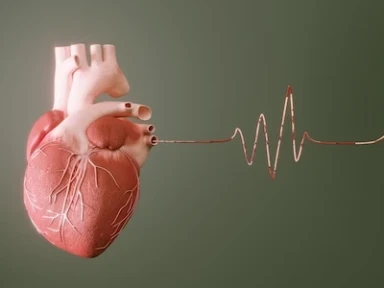{
event: "article_read",
name: `LDL-C Targets in Patients with Heterozygous Familial Hypercholesterolemia`,
author: ``,
tags: `Cardiovascular | Dyslipidemia | Cardiovascular`,
publication_date: ``,
interaction_type: "content"
}
LDL-C Targets in Patients with Heterozygous Familial Hypercholesterolemia
Even with maximum intensity statin/ezetimibe treatment, most of the patients with familial hypercholesterolemia (FH) do not achieve the latest low-density lipoprotein cholesterol (LDL-C) targets; highlighting the necessity for proprotein convertase subtilisin/kexin type 9 inhibitors (PCSK9i) therapy and additional LDL-C lowering therapy.
Key Takeaway
- In this cohort of patients with FH, only 2.7% had achieved the European Society of Cardiology/European Atherosclerosis Society (ESC/EAS) 2019-recommended LDL-C target.
- More than half of FH patients (55.9%) would be eligible for add-on PCSK9i therapy despite receiving rosuvastatin/ezetimibe 40/10 mg/day.
- Following theoretical administration of a PCSK9i, 42.4% of patients would still be eligible for additional LDL-C lowering therapies.
Why This Matters
- ESC/EAS 2019 guidelines recommend more aggressive LDL-C targets for patients with FH.
- PCSK9i are recommended in very high-risk patients with FH if the treatment goal is not attained on maximal tolerated statin plus ezetimibe and in FH patients who cannot tolerate statins.
- However, it is currently unknown how many patient with FH are candidates for PCSK9i under 2019 ESC/EAS guidelines and in how many of them a fourth LDL-C lowering agent will be required.
Study Design
- This study analyzed the data from Hellas-FH registry, which is based on a network of sites that are distributed throughout Greece.
- Patients with at least a possible diagnosis of FH (Dutch Lipid Clinic Network [DLCN] score ≥3) were enrolled in the registry. Patients homozygous for FH were excluded.
- Primary endpoint: Rate of LDL-C target achievement
- Secondary endpoint: Impact of a theoretical treatment switch to rosuvastatin/ezetimibe 40/10 mg/day, and the rate of eligibility for PCSK9 inhibitor and the need for extra LDL-C lowering treatment.
Key Results
- In total, 1,694 adult patients (860 male) were enrolled in this analysis, mean age of 50.8 ± 14.7 years old.
- A total of 430 patients had established atherosclerotic cardiovascular disease.
- Among patients, 61.4% (n = 1,040) had a target LDL-C of ≤55 mg/dL and the rest (38.6%, n = 654) a target of ≤70 mg/dL
- Most treated patients were receiving a statin (97.5%) and about half were receiving additional ezetimibe (46.3%) and 4.9% were treated with a PCSK9i
- On-treatment LDL-C was 130 ± 49 mg/dL (3.4 ± 1.3 mmol/L). Almost half of patients (47.3%) had an LDL-C reduction >50% than baseline.
- When 2019 ESC/EAS guidelines were applied to an FH cohort, the LDL-C goals achievement was only 2.7%
- In sub-group of patients with LDL-C targets of ≤55 mg/dL and ≤70 mg/dL, only 2.2% and 3.6% achieved target, respectively (P = 0.146 between groups)
- After theoretical optimization of therapy to rosuvastatin/ezetimibe 40/10 mg daily, mean LDL-C level was 90 ± 26 mg/dL (2.3 ± 0.7 mmol/L).
- Increase of ESC/EAS 2019 target achievement rate was 5.9%
- In sub-group of patients with LDL-C targets of ≤55 mg/dL and ≤70 mg/dL, 3.0% and 10.8% achieved target, respectively (P <0.001 between groups)
- Significant percentage of patients (55.9%) would be eligible for PCSK9i treatment despite receiving rosuvastatin/ezetimibe 40/10 mg
- After theoretical administration of rosuvastatin/ezetimibe 40/10 mg plus PCSK9i (for those who were eligible):
- LDL-C target achievement rate would rise to 57.6%
- However, 42.4% of patients would still be eligible for further LDL-C lowering treatment
- In sub-group analysis of patients with LDL-C targets of ≤55 mg/dL and ≤70 mg/dL, 86.3% and 10.8% achieved target, respectively (P < 0.001 between groups)
- In subgroup of patients (n = 337) with DLCN score ≥9 (i.e., definitive diagnosis of FH).
- Untreated LDL-C levels were 310 ± 90 mg/dL (8.0 ± 2.3 mmol/L)
- Among patients already on treatment (n = 266), mean LDL-C was 147 ± 60 mg/dL (3.8 ± 1.6 mmol/L) with only 2.6% patients achieving the 2019 ESC/EAS LDL-C target
- On switching all these patients not reaching LDL-C target as well as untreated patients to rosuvastatin/ezetimibe 40/10 mg, mean LDL-C was 112 ± 33 mg/dL (2.9 ± 0.9 mmol/L) and 3.3% patients reached target
- 60.2% of patients with definite FH would be eligible for PCSK9i therapy despite receiving rosuvastatin/ezetimibe 40/10 mg versus 55.9% in the whole population.
Limitations
- Diagnosis of FH was made using the DLCN criteria.
- Participating sites were specialist outpatient lipid clinics.
- Rizos CV, Skoumas I, Rallidis L, Skalidis E, Tziomalos K, Garoufi A, et al. LDL cholesterol target achievement in heterozygous familial hypercholesterolemia patients according to 2019 ESC/EAS lipid guidelines: Implications for newer lipid-lowering treatments. Int J Cardiol. 2021;345:119-124. doi:10.1016/j.ijcard.2021.10.024. Epub ahead of print. PMID: 34687802.
Related articles
MAT-KW-2200313/v3/Jan 2024




.webp/jcr:content/jcr_content%20(9).webp)